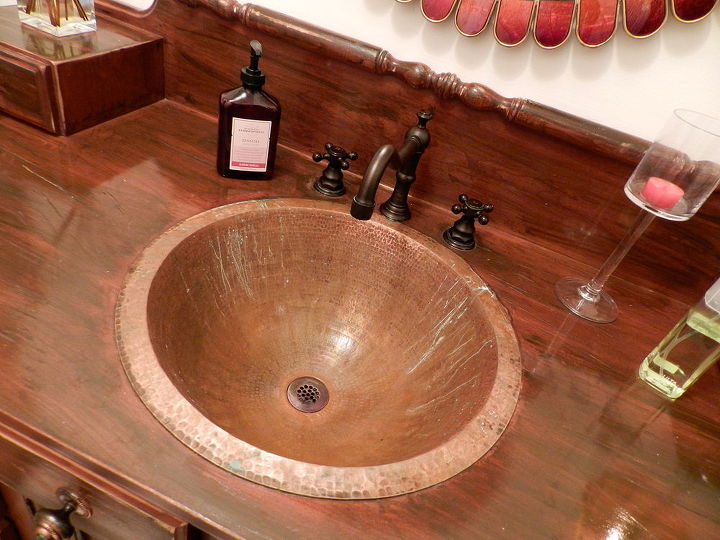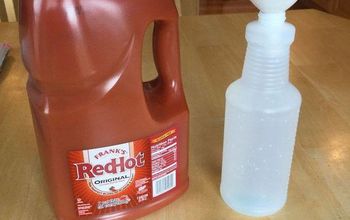What causes hot water from my faucets to look brownish and should I flush my hot water tank. It is about 10 years old.
-
If you have a 10 year old tank Joyce I would suggest that you replace it. This may be the cause of your brown water, but I doubt it. Discoloring of water can be from several factors not just a water heater. If you have old steel pipes that deliver the water into the house or to the fixtures themselves this can be the cause. Also things such as whole house filters that are failing can cause this. Low cost fixtures that are rusting can cause this as well. Flushing the tank in my opinion will do little to nothing to fix the rust issue other then to perhaps cause the early failure of the heater itself. What about the township water assuming your on that? There could be an issue there. If you are on local water supply, contact them to see if there is an issue you need to be made aware of. If your on a well, your well can be pulling rust up out of the ground from iron in the soils. You may need to install a filter.
 Woodbridge Environmental Tiptophouse.com
on Mar 25, 2013
Helpful Reply
Woodbridge Environmental Tiptophouse.com
on Mar 25, 2013
Helpful Reply -
-
WATER DISCOLORATION CAUSES water discoloration Brown, Red, Orange or Yellow Water Brown, red, orange, or yellow water is usually caused by rust. The different colors can be attributed to varying chemical oxidation states of the iron (rust) and by varying concentrations of the rust in the water. There are two major sources that can cause water to be rusty: · The water mains, or · The water pipes in your building Rusty water occurs from sediment in the pipes or rust from the inside walls of the water mains. The rust can be disturbed and temporarily suspended in water with unusual water flows from water main breaks or maintenance or by flushing of a hydrant. This discolored water is not a health threat. When the water is discolored it is recommended to either not wash laundry or to use a rust stain remover or regular detergent but not chlorine bleach as it will react with the iron to form a permanent stain. The other major cause of brown, red, orange or yellow drinking water is rusty water pipes in your building. If old, rusty pipes are discoloring your water, contact H.O. Services to come address the situation. Water that is being discolored by rusty pipes is not a health hazard; however, it is an indication that the pipes are corroding and they can eventually leak. The first step in solving a brown or yellow water problem is to distinguish if the problem is located in your building or if it is in your city or town water supply. The following are some common characteristics of a water main disturbance: · The water was clear earlier but suddenly became discolored · Only the cold water is discolored · The water is discolored at all of the water faucets in your home and does not clear or improve after the water has been run for several minutes Some common characteristics of a corrosion problem in your building include: · The water is discolored every morning or when first used after several hours of disuse · The water clears after it has run for a few minutes · The discoloration is only at one or several faucets, but not all of them · The discoloration is only in the hot water Iron in ground water can also occur naturally in a well supplying a public water system. The presence of iron can be confirmed through analysis of the water. Another possible cause of brown (or black) water is manganese, the presence of which can also be confirmed through analysis. Milky White or Cloudy Water Milky or cloudy white discolored tap water is almost always caused by air in the water. To see if the white color in the water is due to air, fill a clear glass with water and set it on the counter. Observe the glass of water 3 minutes. If the white color is due to air, the water will begin to clear at the bottom of the glass first and then gradually will clear all the way to the top. This is a natural phenomenon, caused by dissolved air in the water that is released when the faucet is opened. When you relieve the pressure by opening the faucet and filling your glass with water, the air is now free to escape from the water, giving it a milky appearance for a few minutes. If your water is cloudy or milky white in appearance and it does not clear in a glass after 5 minutes, contact the water department in your town. Green Water In cooler climates, the most common cause of green discolored tap water is copper plumbing corrosion. If this is happening, the water will usually have a bluish-green tint and/or will leave a bluish-green stain on porcelain if the water drips from a faucet. Copper corrosion can also be caused by your electrical system being grounded to your water pipes, especially if you have a mixture of pipe material (e.g., some copper and some galvanized steel.). Green water may also be present in homes with copper plumbing that is less than two years old. The presence of copper can be confirmed through analysis. Green water can also be caused by dezincification of poor-quality bronze alloys found in valves, water pumps, and water pump parts. This problem can occur in high-rise buildings and large industrial properties where the water is pumped to storage tanks. The water may also be tested for zinc. During warm weather, green water may be caused by green algae in water supplies served by reservoirs or rivers. Algae are single-celled plants that readily grow in bodies of fresh water. Algae are not a health threat and reservoirs can be managed and monitored to prevent algae from growing to the point where they discolor the water. The water supplier through filtration may also remove algae. Blue Water Having blue water is rare and the cause may be due to extreme copper plumbing corrosion. If this is happening, the water will usually have a bluish-green tint and/or will leave a bluish-green stain on porcelain if the water drips from a faucet. This copper corrosion can be caused by your electrical system being grounded to your water pipes, especially if you have a mixture of pipe material (e.g., some copper and some galvanized steel.) The presence of copper can be confirmed through analysis. Blue water can also be caused by dezincification of poor-quality bronze alloys found in valves, water pumps, and water pump parts. This problem can occur in high-rise buildings and large industrial properties where the water is pumped to storage tanks. The water may also be tested for zinc. Call H.O. Services today if you are noticing discoloration in your water. 617-489-6324 Tags: discolored tap water, water discoloration causes
 H.O. Electric
on Mar 25, 2013
Helpful Reply
H.O. Electric
on Mar 25, 2013
Helpful Reply -
-
Great post H.O. Electric.
 Woodbridge Environmental Tiptophouse.com
on Mar 25, 2013
Helpful Reply
Woodbridge Environmental Tiptophouse.com
on Mar 25, 2013
Helpful Reply -
-
Very informative, thank you H.O. Electric.
 Phyllis W
on Mar 25, 2013
Helpful Reply
Phyllis W
on Mar 25, 2013
Helpful Reply -
-
more than likely you have galvanized pipes....just a guess! It doesn't hurt to drain and flush a water heater periodically. Great response HO
 HandyANDY - Handyman & All Repairs, LLC
on Mar 26, 2013
Helpful Reply
HandyANDY - Handyman & All Repairs, LLC
on Mar 26, 2013
Helpful Reply -
-
I was told not to flush out the water heater once rust starts to appear. To me it sounds like you need a new water heater. I called Home Depot for mine. Approximately $1,000.
 Nancy B
on Jun 16, 2015
Helpful Reply
Nancy B
on Jun 16, 2015
Helpful Reply -
Related Discussions
How to get rid of mice?
We seem to have some unwelcome Mickeys and Minnies in our house. What is the best way to get rid of them?
How to remove popcorn ceiling with asbestos?
I want to remove my popcorn ceiling, but it has asbestos in it. How do I go about this safely?
How to caulk baseboard gaps?
How do I fill gaps at baseboard, should I caulk? If so, does anyone know how to caulk baseboards?
How to fix squeaky hardwood floors?
How do I fix squeaky hardwood floors?
I have ruined my copper sink! Please help!
I'm hoping to save my copper sink, but I am afraid I have totally ruined it. I need some suggestions on how to save it! What can I spray it with, or where can I fin... See more
Black stuff in home water supply.
This black oily or paraffin type stuff sometimes comes through my hot water line in the second story. Have talked to the water company. They say it isn't them or th... See more





